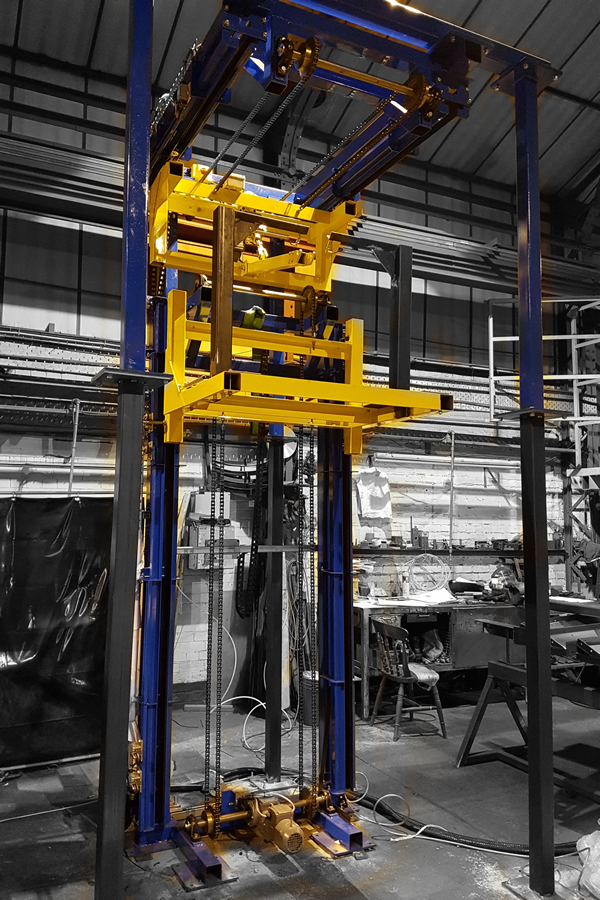Contrast Disabled Platform Lifts Prices UK: Affordable Options for each Need
Contrast Disabled Platform Lifts Prices UK: Affordable Options for each Need
Blog Article
Exploring the Globe of Lifts: Common Issues Dealt With by Numerous Lift Systems
As we navigate via the vertical transportation systems of contemporary buildings, lifts stand out as an important component of our day-to-day lives. From hydraulic elevators to grip systems and machine-room-less designs, each lift kind comes with its collection of usual concerns.
Hydraulic Lifts
Hydraulic lifts, often preferred for low-rise structures, use fluid stress to manage the activity of the lift vehicle (lift repair companies). This device involves a hydraulic pump pressing oil right into a cylinder, triggering the elevator to relocate the desired direction. While hydraulic elevators are understood for their peaceful and smooth operation, they do feature their very own set of typical concerns
One common problem with hydraulic elevators is oil leak. The seals in the hydraulic system can use out over time, causing oil infiltration. This not just produces a mess but can also impact the lift's performance if left unaddressed. In addition, problems with the control system, such as malfunctioning valves or a malfunctioning pump, can cause disturbances in the lift's movement.
Regular maintenance and prompt repair services are necessary to make sure the smooth performance of hydraulic elevators. By attending to these usual problems proactively, building owners can decrease downtime and ensure the safety and security and efficiency of their vertical transportation system.
Grip Lifts
When considering upright transportation systems in structures, another typical kind apart from hydraulic elevators is the grip elevator. Traction lifts operate utilizing a system of ropes and counterweights that relocate the elevator auto by gripping onto the hoist ropes. This device permits smoother and quicker vertical transportation compared to hydraulic systems.
One of the common issues faced by traction lifts is rope wear. The consistent motion of the ropes within the traction system can bring about tear and use in time, potentially creating the lift to breakdown or become hazardous for use. Normal evaluations and maintenance of the ropes are necessary to guarantee the elevator's appropriate performance and safety.
An additional problem that traction elevators may run into is associated with the control system. Issues with the control system can lead to concerns such as unpredictable motion, delays in action times, or also full closures. Normal screening and upkeep of the control system are essential to avoid such issues and make certain the elevator's dependability.
Machine-Room-Less (MRL) Lifts

Among the crucial components of MRL lifts is the small gearless grip machine that is set up within the hoistway. This machine efficiently drives the elevator vehicle without the need for large devices located in typical traction lifts. Furthermore, MRL lifts generally make use of a counterweight system to balance the cars and truck, more enhancing their energy performance.
Despite their advantages, MRL lifts might encounter difficulties connected to upkeep and repair service because of the constrained space for devices setup. Ease of access for servicing parts within the shaft can be restricted, needing specialized training for specialists. Correct upkeep routines and regular examinations are vital to make sure the ongoing smooth procedure of MRL lifts.
Overloading and Weight Limitation Issues
Are elevators outfitted to take care check that of excess weight loads effectively and securely? Straining and weight restriction problems are essential worries in lift operations. Lift producers layout raises with details weight capabilities to ensure guest security and equipment longevity. Exceeding these weight limitations can lead to numerous issues, including mechanical failures, delays, and safety threats.
When lifts are overloaded, it places too much pressure on the motor, cables, and various other elements, possibly causing breakdowns or breakdowns. If they spot excess weight, safety and security devices such as sensors and overload sensors are in place to stop elevators from relocating. Furthermore, surpassing weight limitations can cause increased energy consumption and wear and tear on the elevator system.
To minimize overloading concerns, developing supervisors should prominently present weight limitations in elevators and inform passengers on the relevance of adhering to these restrictions - lift repair companies. Regular maintenance checks by certified service technicians can additionally help ensure that lifts are operating article source within safe weight parameters. By resolving overloading and weight limit problems proactively, building proprietors can improve elevator security and effectiveness
Electric System Failings
Exceeding weight limitations in elevators can not just bring about mechanical problems however likewise potentially add to electric system failings within the lift facilities. Electrical system failings are a vital issue in elevator procedure, as they can trigger unanticipated shutdowns, malfunctions, and even safety and security threats. One usual electric problem is the overheating of elements because of too much existing circulation brought on by overwhelming the elevator beyond its ability. This can bring about harm to the motor, control, or wiring systems, resulting in expensive repair work and downtime.
Normal maintenance and examinations are important to identify and resolve possible electrical issues promptly, guaranteeing the secure and efficient procedure of elevator systems. By adhering to weight limitations and conducting routine electric system checks, building proprietors can alleviate the threat of electric failings in lifts.
Conclusion

Hydraulic elevators, typically favored for low-rise buildings, use fluid pressure to manage the activity of the elevator cars and truck.When considering upright transportation systems in structures, one more usual kind aside from hydraulic lifts is the traction lift. Traction lifts operate using a system of ropes and counterweights that move the elevator cars and truck by gripping onto the hoist ropes. Unlike conventional elevators that require a different maker room to house the tools, MRL lifts incorporate many of the parts within the shaft, removing the demand for a committed maker room.In conclusion, lifts encounter usual problems such as hydraulic malfunctions, grip system failings, and electrical system issues.
Report this page